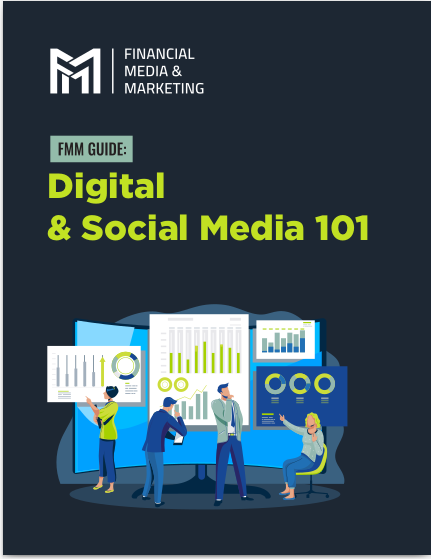Key Takeaways
-
Your digital footprint acts as your online resume, shaping how clients and leads perceive you.
-
A well-maintained digital presence builds trust and establishes authority, which is crucial for financial advisors.
Why Your Digital Footprint Matters More Than Ever
In today’s hyperconnected world, your digital footprint is a reflection of your professional identity. For financial advisors, this means every tweet, LinkedIn post, or blog entry contributes to how clients and leads perceive you. But here’s the kicker: your digital presence doesn’t just attract attention; it sets the tone for your reputation.
Having a polished digital footprint isn’t optional anymore. It’s a necessity. Clients will Google your name before they meet you. They’ll scroll through your profiles, read your content, and even judge your professionalism based on your online activity. The question is: does your digital footprint accurately reflect your expertise and credibility?
The Anatomy of Your Digital Footprint
Active Footprint
This includes the content you create or share deliberately, like social media posts, blogs, and professional profiles. Every article you write, comment you leave, or profile update you make adds to this part of your footprint.
Passive Footprint
Your passive footprint is the information left behind unintentionally, such as online purchases, app usage, or metadata from emails. While this might seem less relevant, even a passive digital trail can influence perceptions if it’s tied to your professional life.
Professional vs. Personal
It’s vital to maintain a clear boundary between your professional and personal digital footprints. While authenticity is important, oversharing personal details can blur lines and dilute your authority as a financial advisor.
How Clients Perceive Your Digital Presence
Clients often rely on your online presence to decide whether you’re trustworthy, knowledgeable, and approachable. Here’s how different aspects of your footprint impact their perception:
Social Media Profiles
Active and well-maintained profiles on platforms like LinkedIn signal that you’re engaged and up-to-date. Outdated or incomplete profiles? They suggest disinterest or a lack of professionalism.
Search Engine Results
When clients search your name, they’ll form an impression within seconds based on what appears. Positive reviews, insightful blog posts, and professional accolades can work wonders. Conversely, negative content or irrelevant results may tarnish their view.
Content Quality
The articles, videos, and posts you publish reflect your expertise. Clear, insightful, and relevant content positions you as an authority in your field. Poorly written or irrelevant content does the opposite.
Crafting a Positive Digital Footprint
Audit Your Current Presence
Start by Googling your name and reviewing what comes up. Are the search results aligned with your professional image? Identify gaps or areas needing improvement.
Update Your Profiles Regularly
A stagnant profile is as good as nonexistent. Regular updates show you’re active and involved. Use high-quality photos, professional summaries, and clear contact information.
Be Consistent Across Platforms
Your branding should be uniform. From profile pictures to tone and messaging, consistency builds recognition and trust.
Publish Thought-Leadership Content
Blogs, videos, or infographics can establish your authority. Focus on topics that resonate with your clients’ needs, such as investment tips, financial planning strategies, or economic insights.
Common Digital Footprint Pitfalls (And How to Avoid Them)
Inconsistent Messaging
When your LinkedIn profile touts expertise, but your Twitter feed is filled with irrelevant memes, it sends mixed signals. Align your messaging to reflect professionalism consistently.
Neglecting Negative Content
Ignoring a bad review or negative comment can be damaging. Address concerns professionally to show accountability and transparency.
Overloading Personal Content
While some personal posts can make you relatable, excessive sharing dilutes your professional image. Find a balance that aligns with your brand.
Building a Client-Focused Digital Presence
Understand Your Audience
What do your clients care about most? Use this knowledge to tailor your content. If your clients are young professionals, focus on student loan management and budgeting tips. For retirees, delve into estate planning or wealth preservation.
Engage with Intent
Every comment, share, or post should serve a purpose. Engaging thoughtfully with industry trends or client concerns showcases your expertise.
Leverage Analytics
Track your online performance. Tools that measure social media engagement or website traffic can offer insights into what resonates with your audience, allowing you to refine your strategy.
Safeguarding Your Digital Reputation
Monitor Regularly
Set up Google Alerts for your name and key phrases related to your brand. This helps you stay on top of what’s being said about you online.
Respond Professionally
Whether it’s a glowing review or a harsh critique, respond promptly and respectfully. Your reaction demonstrates your professionalism and commitment to client satisfaction.
Invest in Privacy Settings
Review privacy settings on personal accounts. Restrict access to personal information that could blur the lines between your personal and professional image.
Tools to Boost Your Digital Footprint
Several tools can help you manage and optimize your online presence. Here’s a look at some essential categories:
Social Media Management
Platforms that schedule posts, analyze engagement, and suggest optimal posting times streamline your efforts.
Content Creation Tools
From graphic design to blog editing, these tools enhance the quality of your output.
Reputation Management
Services that monitor reviews, mentions, and other feedback ensure you’re always in the loop about your online image.
SEO Optimization
Understanding keywords and improving your website’s search ranking can significantly boost visibility.
Staying Ahead in a Digital World
The digital landscape is always evolving. What works today may not work tomorrow. Staying informed and adaptable ensures your digital footprint continues to serve your professional goals.
Keep Learning
Take time to understand emerging digital trends. Whether it’s new social platforms or algorithm changes, staying ahead positions you as a forward-thinking advisor.
Experiment and Adapt
Don’t be afraid to try new approaches. Experimenting with different content types or platforms can reveal untapped opportunities.
Your Digital Footprint, Your Brand
Your digital footprint isn’t just a collection of online activities—it’s your brand. As a financial advisor, maintaining a strategic, polished, and authentic online presence is key to building trust and engaging effectively with clients and leads. Remember, your digital footprint tells your story. Make it one worth reading.










